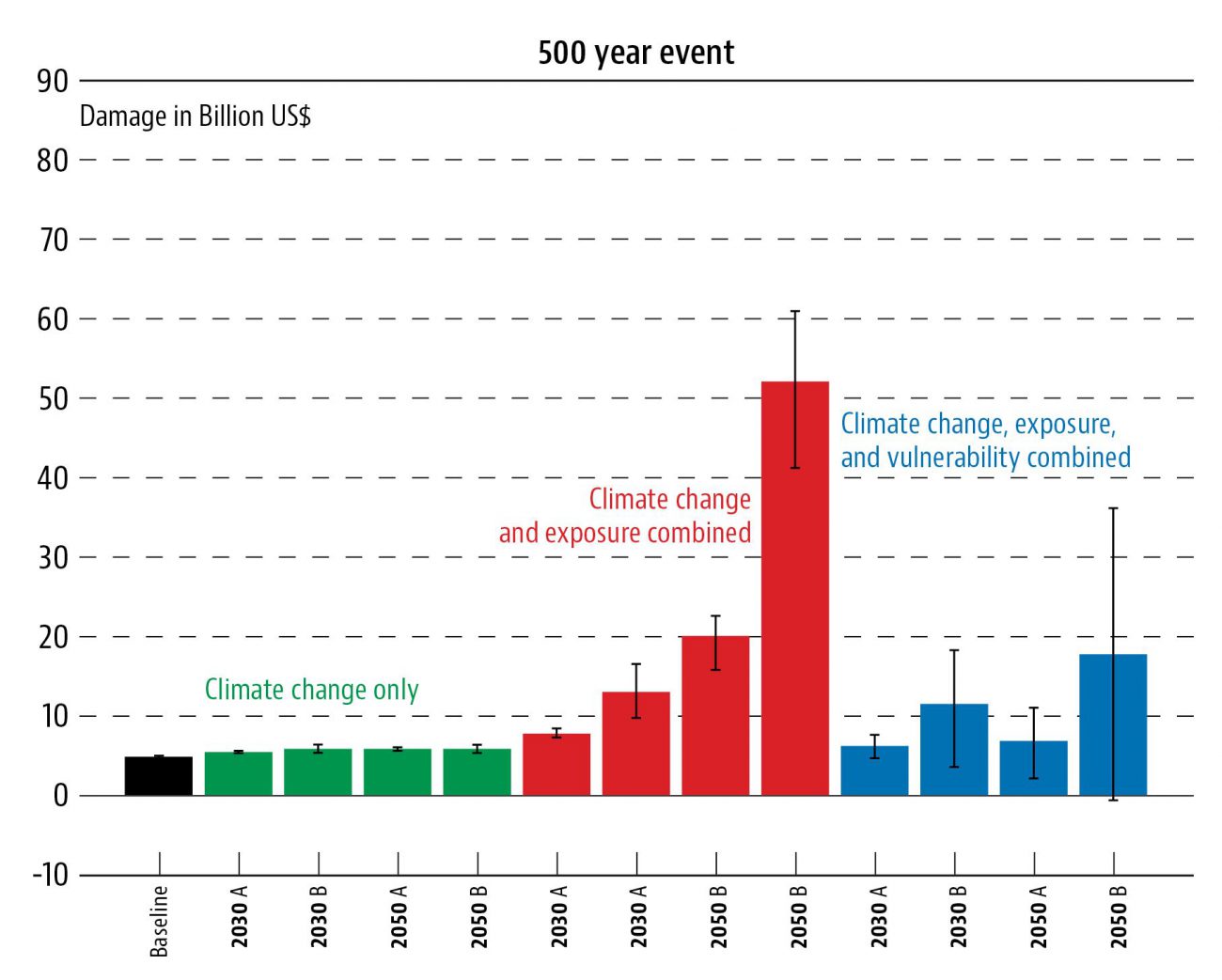Untangling uncertainty for disaster risk projections
When assessing and understanding the risks that accompany disasters, both researchers and policymakers must grapple with uncertainties. In a study of extreme flood risk in Bangladesh, IIASA researchers show that socioeconomic uncertainty is more important to risk predictions in the short term, but climate uncertainty becomes more relevant in the longer term.
Few studies dissect the drivers of long-term risk, however this work from the IIASA Risk and Resilience Program fills this gap by using a case study of extreme flood risk in Bangladesh. The study examines how sources of uncertainty in the scenarios and models used could affect estimates of future loss caused by extreme events.
There are three main drivers of extreme risks: climate change, exposure, and vulnerability, and they affect risk in different ways. Exposure, for example, describes the assets such as houses or infrastructure that are at risk. The greater the number of houses on a flood plain the greater the exposure. Socioeconomic development can affect exposure in particular because if more houses are built there is also a higher possibility that more will get damaged, irrespective of climate change or vulnerability changes.
By examining different assumptions regarding climate, exposure, and vulnerability the researchers showed that scenario uncertainty regarding socioeconomic development seems to contribute the most to the variability in results.
While socioeconomic uncertainty is more dominant than climate change uncertainty, the longer the timescale considered, the larger the relative contribution of climate uncertainty to the estimated economic loss. The figure shows the losses for a 500 year event: for 2030 and 2050, under two climate scenarios A and B, looking at either climate change impact only, climate change and exposure impacts combined, or the full combination of climate change, exposure, and vulnerability combined.
This shows that while climate change and increases in housing and infrastructure assets may cause devastating impacts in future extreme events (see column 2050 B in the ‘climate change and exposure combined’ category) reducing in vulnerability can also significantly decrease losses (see column 2050 B in the ‘climate change, exposure, and vulnerability combined’ category).
Mean and standard deviation of loss estimate under alternative scenarios for Bangladesh flood risk (in billion US$). Baseline is the current risk.
A systems perspective taking all three drivers into account—climate change, exposure, and vulnerability—is needed to inform policy targets and implementation according to different timescales. The research has important implications for decreasing future extreme risks at national levels. Freeing countries from the burden of these losses will also help them to achieve the Sustainable Development Goals.
References
[1] Hochrainer-Stigler S, Mochizuki J, & Pflug G (2016). Impacts of Global and Climate Change Uncertainties for Disaster Risk Projections: A Case Study on Rainfall-Induced Flood Risk in Bangladesh. Journal of Extreme Events 3 (1): 1650004.

